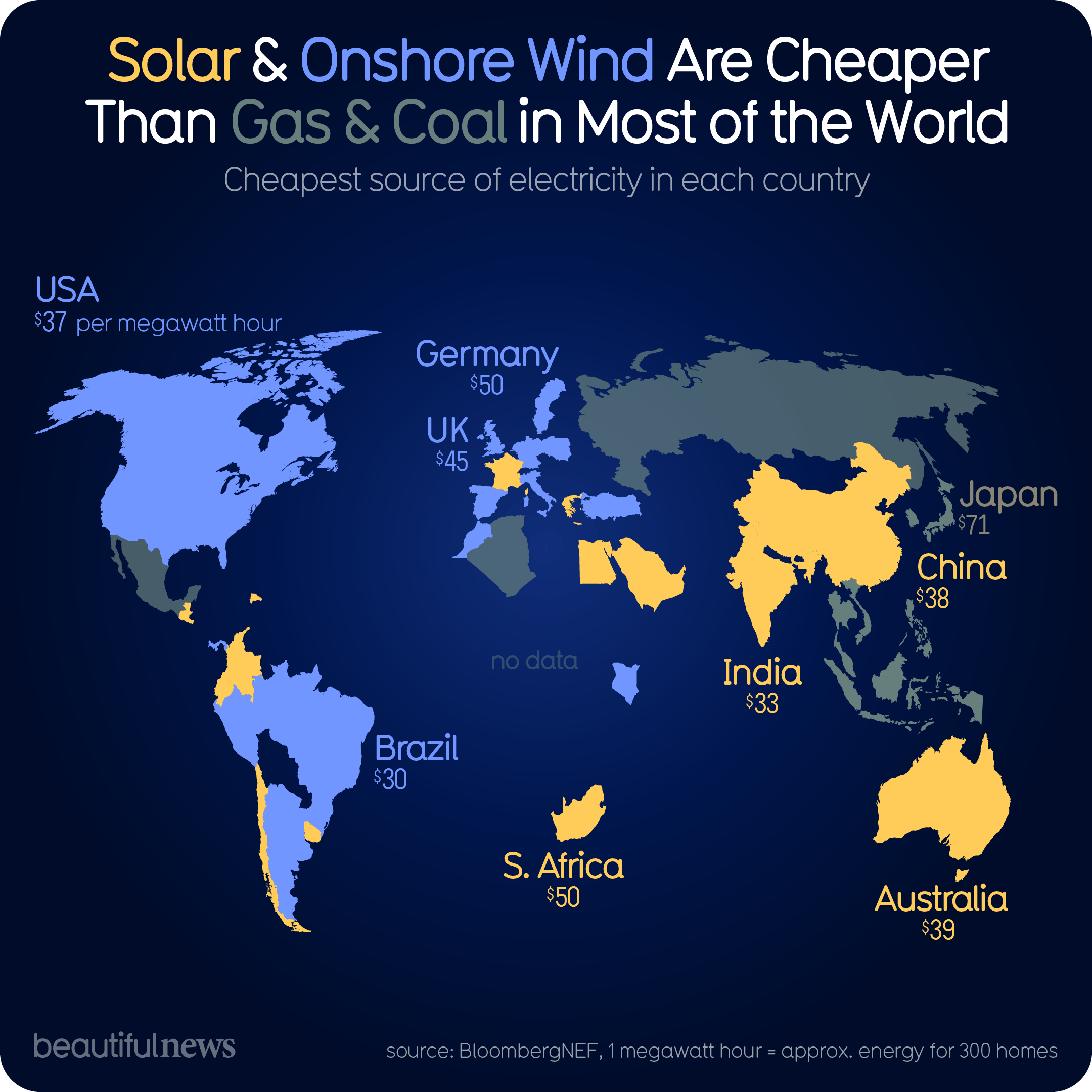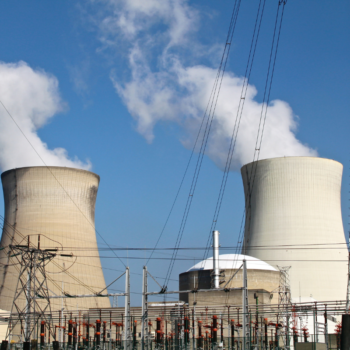|
|
Solar PV and onshore wind (for new-build generation) is cheaper for 2/3 of the global population, including the US and China. Now what?
Problems with a solar-wind world
Critics of widespread wind & solar point to its over-hyped environmental prowess and economic inefficiency. Now that it’s cheap, let’s highlight key problems with the current clean energy process.
-
Capacity factors
The sun does not always shine and the wind does not always blow.
-
The capacity factor of renewables are lower than coal, gas and nuclear (capacity factor of 85-90 percent). Onshore wind units place 40 percent capacity, whereas solar facilities use 30 percent or less.
- Capacity values are “the ability to reliably meet demand.”
- Using capacity values as a metric, the price of wind & solar spikes due to the unreliability during peak demand and necessary back-ups on stand-by to ensure contingent power.
- As reliability and capacity values go ↑, the price of renewables will go ↓
-
If widely adopted, renewables would cost higher on average. Less efficient geographic regions need to build solar and wind infrastructure, reducing economies of scale.
-
The Institute for Energy Research estimates that wind power is about twice as expensive as conventional gas-fired power, and that solar power is almost three times as expensive (capacity value).
-
-
Environmental cost
It’s better than oil, but it’s serious. Let’s talk about it.
-
Heavy land use: The Green New Deal would require over 100 million acres to power America at the same capacity as oil & gas. That’s larger than the state of California. With all that space needed, it would inevitably spill into ecologically sensitive areas.
-
Production and disposal: We would probably import metals for the wind turbines and solar panels from China. Even with tariffs, it makes more economic sense. As much as 78 million metric tons worldwide by 2050 will come from solar panel waste.
-
Impact on wildlife: hundreds of thousands of birds die every year at the hands of wind turbines.
- Weak regulation: Wind energy development, for example, has voluntary, non-mandatory federal guidelines (even during the Obama years). Assuming that wind energy companies would behave better than their fossil fuel predecessors and willingly regulate themselves is a mistake.
-
-
Reliability
Frequent backups still use fossil fuels.
-
When wind and solar can’t produce enough electricity, fossil fuels are used as backups. The idea behind renewables is that if we eventually use enough solar and wind, our dependency on fossil fuels will disappear.
-
The problem? Based on today’s reliability of renewables, the climate impact of a GND-sized solar-wind market would be near net-zero.
-
Bottom line
Using research conducted by BloombergNEF and this graphic illustrated by BeautifulNews, we can now say wind & solar — at face value — are cheaper than oil & gas in most of the world. But that’s just the first step. If we want to continue the shift away from fossil fuels, we still need better solutions.













People reacted to this story.
Headline Says Wind and Solar Cheaper than Oil / Gas.
Yet text says \”The Institute for Energy Research estimates that wind power is about twice as expensive as conventional gas-fired power, and that solar power is almost three times as expensive (relative to its capacity value).\”
This seems like a direct contradiction … so if the explanation depends on what \’capacity value\’ means, please clearly explain this.
The previous bullet point under “Capacity values highlights this point. Perhaps I should move that bullet to under the excerpt you are referring to.
Capacity values are “the ability to reliably meet demand.”
Using capacity values as a metric, the price of wind & solar spikes due to the unreliability during peak demand and necessary back-ups on stand-by to ensure contingent power. As reliability and capacity values go ↑, the price of renewables will go ↓